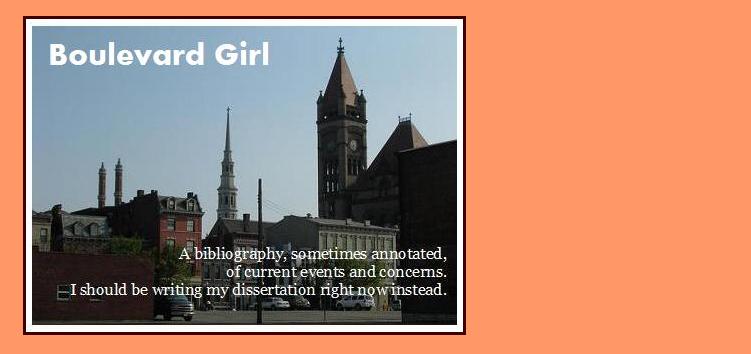The rhetorical jockeying that is likely to ensue does seem to force a debate and airing of the differences between Fatah and Hamas that needs to happen among Palestinians, and this way is better than they way they've been duking it out over the past few years. We will see who is willing to do what, who will turn out to have been bluffing. Recent (attempted) demonstrations in Gaza and the West Bank, as well the March 2011 public opinion poll by the PCPSR indicates widespread agreement on the priority of reconciliation between Fatah and Hamas. While that may be easy enough to agree upon, there is surely not a consensus at this point as to the actual terms of such a reconciliation. The idea that a panel of "technocrats" can somehow solve fundamental controversies apolitically is absurd.
These are the official terms of the reconciliation:
- The establishment of a government of technocrats instead of the two currently existing governments headed by Salam Fayyad and Ismail Haniyeh.
- The holding of general elections to the parliament and presidency in about eight months.
- A merger and unification of the security apparatuses.
- The release of political prisoners.
- Arab League supervision of the implementation of the agreement.
"On Reconciliation, ‘The Devil Is In the Details," Interview with Nathan Thrall (International Crisis Group) by Marc Tracy. Tablet Magazine. April 29, 2011.
"Analysis: How to deftly play the Palestinian 'reconciliation' card," Herb Kleinon. Jerusalem Post. April 29, 2011.
"Palestinian Factions Give Different Views of Unity Pact," Ethan Bronner. New York Times. April 28, 2011.
"The Fatah-Hamas Agreement: Analysis and Initial Consequences," Jonathan Halevi. Jerusalem Center for Public Affairs. April 28, 2011.
"Rival Palestinian factions reach unity agreement," Ibrahim Barzak. With Mohammed Daraghmeh in Ramallah, West Bank, and Diaa Hadid in Cairo, Egypt. Associated Press. April 27, 2011.
See also:
August 10, 2010 report from the Congressional Research Service on,
"US Foreign Aid to the Palestinians." By Jim Zanotti.
Note especially the last paragraph, where the author speculates about the risks to US funding from a possible reconciliation deal that would include Hamas in the Palestinian Authority again.
After Hamas led the PA government for over a year, its forcible takeover of the Gaza Strip in June 2007 led to the creation of a non-Hamas government in the West Bank—resulting in different models of governance for the two Palestinian territories. Since then, the United States has dramatically boosted aid levels to bolster the PA in the West Bank and President Mahmoud Abbas vis-à-vis Hamas. The United States has appropriated or reprogrammed nearly $2 billion since 2007 in support of PA Prime Minister Salam Fayyad’s security, governance, development, and reform programs, including $650 million for direct budgetary assistance to the PA and nearly $400 million (toward training, non-lethal equipment, facilities, strategic planning, and administration) for strengthening and reforming PA security forces and criminal justice systems in the West Bank. The remainder is for programs administered by the U.S. Agency for International Development and implemented by nongovernmental organizations in humanitarian assistance, economic development, democratic reform, improving water access and other infrastructure, health care, education, and vocational training. In December 2009, Congress approved $500 million in total FY2010 assistance pursuant to P.L. 111-117, the Consolidated Appropriations Act, 2010.
In addition to its bilateral assistance to the Palestinians, the United States is the largest single-state donor to the U.N. Relief and Works Agency for Palestine Refugees in the Near East (UNRWA), which provides food, shelter, medical care, and education for many of the original refugees from the 1948 Arab-Israeli war and their descendants—now comprising approximately 4.8 million Palestinians in Jordan, Syria, Lebanon, the West Bank, and Gaza. Since UNRWA’s inception in 1950, the United States has provided the agency with nearly $4 billion in contributions. U.S. contributions to UNRWA have steadily increased over the past decade, with nearly $228 million thus far for FY2010. Whether UNRWA’s role is beneficial overall, however, is a polarizing question, particularly with respect to UNRWA’s presence in Hamas-controlled Gaza.
The possibility of a consensus or unity government to address the problem of divided rule among Palestinians could lead to a full or partial U.S. aid cutoff if Hamas is included in the government and does not change its stance toward Israel. Even if the immediate objectives of U.S. assistance programs for the Palestinians are met, lack of progress toward a politically legitimate and peaceful two-state solution could undermine the utility of U.S. aid in helping the Palestinians become more cohesive, stable, and self-reliant over the long term.
***



